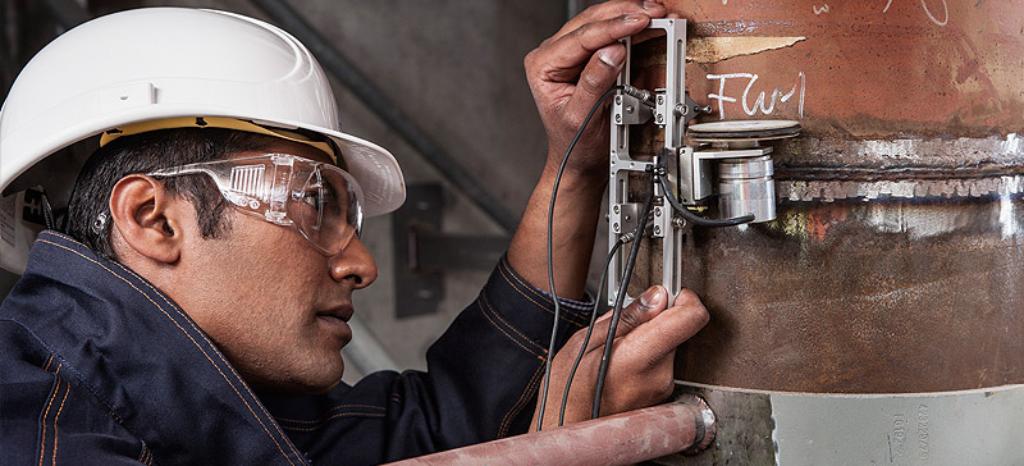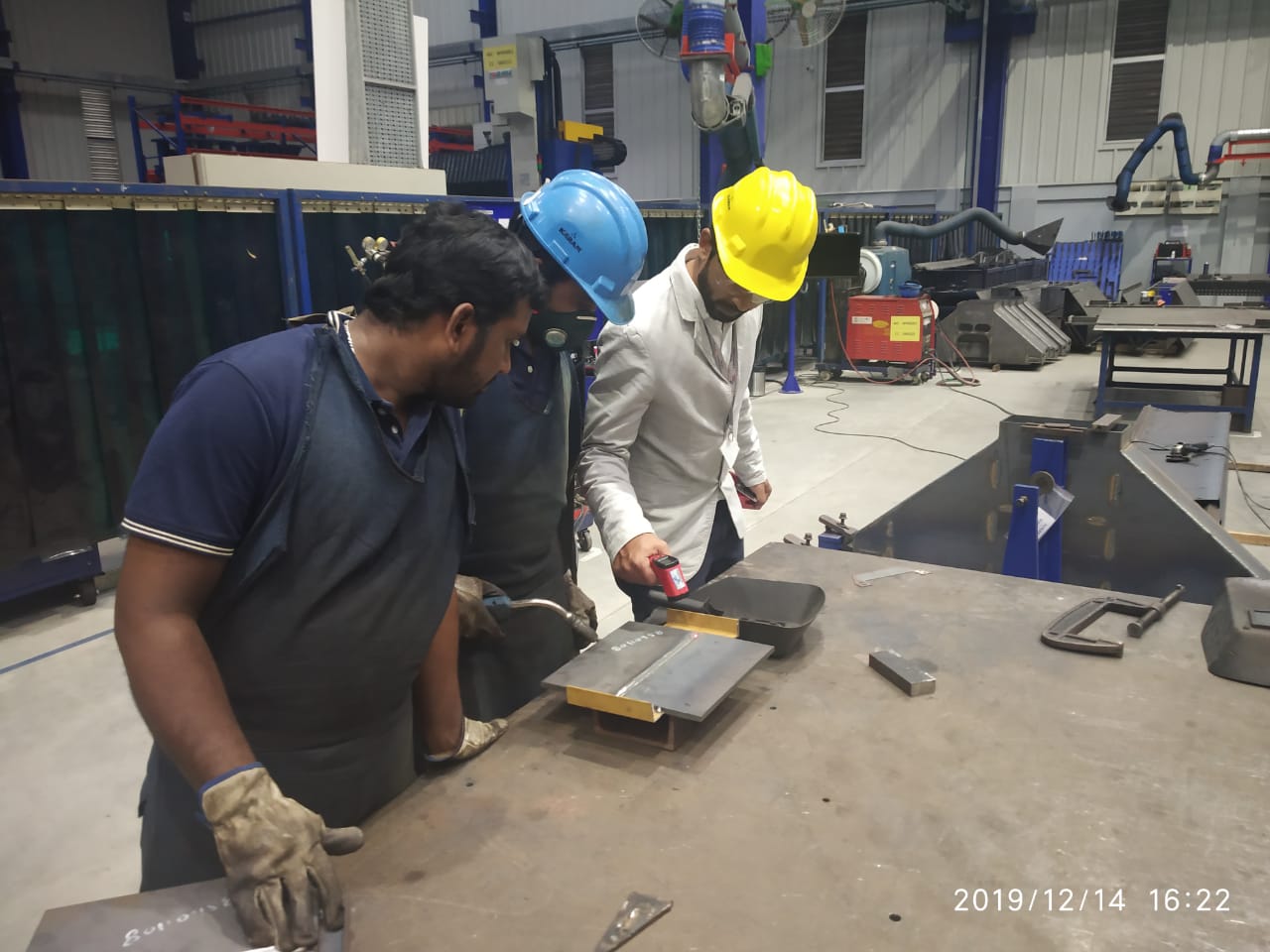A Comprehensive Overview to Welding Evaluation: Recognizing Specifications, Techniques, and Best Practices for Quality Guarantee

Welding inspection plays a crucial function in making sure the structural integrity and safety and security of welded parts, demanding an extensive understanding of sector requirements such as those established by AWS and ASME. As we check out these critical components, it becomes evident that the effects of welding examination extend far beyond compliance, welcoming a closer assessment of exactly how these processes form market standards and methods.
Value of Welding Inspection
Welding evaluation plays a crucial function in ensuring the honesty and safety of bonded structures. It is an important procedure that verifies that welds adapt predefined specifications, which is important in numerous markets, including construction, automobile, and aerospace. By performing thorough inspections, possible issues such as cracks, insufficient combination, and porosity can be determined early, avoiding catastrophic failings that could cause accidents or pricey repair work.
The value of welding assessment expands beyond plain conformity with laws; it also promotes trust fund with stakeholders. Clients and governing bodies expect assurance that the frameworks they depend on are built to withstand operational stress and anxieties. Reliable welding examination techniques add to long-term toughness and efficiency of the structures, eventually leading to minimized upkeep prices.
In addition, welding inspection advertises a society of quality within organizations, encouraging adherence to best practices and continuous renovation. By incorporating evaluation procedures right into the welding operations, companies can improve their reputation and establish themselves as leaders in top quality guarantee. Finally, the importance of welding evaluation depends on its capacity to safeguard lives, make sure structural integrity, and support industry requirements, making it a vital facet of welding procedures.
Key Sector Specifications
Ensuring compliance with crucial market criteria is vital for preserving the high quality and safety and security of welded structures. Numerous organizations develop these requirements to promote ideal techniques in welding and evaluation. Amongst the most recognized are the American Welding Culture (AWS) and the American Culture of Mechanical Engineers (ASME), which offer detailed standards and requirements for welding procedures and inspection requirements.
AWS standards, such as AWS D1.1 for architectural welding, overview demands for products, style, and screening to ensure the honesty of welds. ASME codes, including ASME Area IX, control the certification of welders and welding treatments, guaranteeing constant top quality in commercial applications. Internationally, the ISO 3834 typical highlights high quality demands for combination welding, giving a framework for organizations to show compliance with global best methods.
Compliance with these standards not only boosts the dependability of welded structures however also reduces risks connected with structural failures. Furthermore, adherence to sector criteria is often a requirement for regulative approvals and can substantially influence job requirements. Eventually, understanding and carrying out these essential criteria are crucial for effective welding evaluation and high quality assurance.
Evaluation Techniques Overview
Reliable welding inspection relies upon a range of methods designed to analyze the top quality and stability of welds. These methods can be generally classified right into non-destructive and devastating testing (NDT) methods. Non-destructive screening techniques, which are extensively favored in the market, enable the evaluation of welds without compromising the stability of the material.
Among the most typically made use of NDT methods are visual examination, ultrasonic testing, radiographic testing, and magnetic fragment testing. Visual evaluation is commonly the first step in the analysis process, making it possible for assessors to identify surface area imperfections and examine weld bead accounts.
Each method has its own benefits and limitations, making it crucial for inspectors to choose one of the most proper technique based on the details requirements of the job, the products involved, and the urgency of the welds being checked. This mindful option guarantees comprehensive assessments and upholds safety and security and top quality requirements in welding procedures.

Common Flaws and Their Implications
A detailed understanding of typical issues in welds is crucial for maintaining structural integrity and safety in bonded buildings. Welding problems can considerably compromise the mechanical buildings of the joint, bring about failures that could threaten both personnel and equipment.
Common flaws include porosity, which materializes as small gas pockets trapped in the weld steel, deteriorating the total structure. Splitting is an additional prevalent issue, often arising from fast cooling or incorrect joint style, resulting in stress concentrations that can cause disastrous failings. Insufficient blend happens when the weld metal falls short to correctly bond with the base product, producing powerlessness that may lead to splitting up under load.
Various other significant problems consist of damaging, where the weld grain wears down the base metal, and slag inclusions, which can impede the weld's toughness. Each of these defects has details implications; for circumstances, porosity can minimize ductility, while splitting directly impacts tensile toughness. Identifying and recognizing these problems during assessment is necessary for implementing restorative actions and making certain conformity with sector standards, inevitably guarding the structural honesty of welded settings visit homepage up.
Finest Practices for Quality Control
Carrying out finest methods for high quality guarantee in welding procedures is essential for achieving ideal results and decreasing flaws. One essential practice is the facility of clear welding treatments that stick to sector criteria and specifications. These procedures should include comprehensive directions pertaining to product selection, joint preparation, best site and welding techniques to guarantee consistency and top quality.
Normal training and certification of welding workers are additionally vital. Knowledgeable welders who comprehend the significance of top quality guarantee are a lot more likely to create audio welds. Additionally, applying a robust inspection program, including both aesthetic and non-destructive testing (NDT), can assist determine defects early while doing so, enabling timely restorative activities.
Documentation plays a crucial role in quality assurance. Preserving precise records of welding fixings, assessments, and specifications makes sure traceability and liability. Moreover, employing innovative modern technologies such as automated welding devices can boost accuracy and decrease the potential for human error - Welding Inspection Gilbert Arizona.
Last but not least, promoting a society of top quality within the organization motivates employees to prioritize top quality in their job. By sticking to these ideal practices, organizations can improve the integrity of their welding procedures, ultimately resulting in boosted product top quality and decreased costs connected with rework and repairs.
Verdict
In conclusion, welding evaluation plays an essential function in making certain the integrity and safety and security of bonded frameworks. By executing finest practices, companies can enhance integrity, decrease upkeep expenses, and cultivate count on amongst clients, eventually adding to effective welding procedures.
Furthermore, welding assessment advertises a culture of quality within companies, encouraging adherence to best practices and continuous enhancement. In verdict, the value of welding evaluation exists in its capability to guard lives, make certain architectural integrity, and maintain sector criteria, making it an essential facet of welding operations.
Amongst the most identified are the American Welding look at here Culture (AWS) and the American Culture of Mechanical Designers (ASME), which give comprehensive guidelines and specs for welding processes and assessment criteria.
Inevitably, understanding and implementing these vital requirements are vital for effective welding inspection and high quality assurance.
Reliable welding evaluation depends on a range of strategies created to assess the high quality and integrity of welds. - Welding Inspection Gilbert Arizona
Comments on “How Welding Inspection Gilbert Arizona Can Boost Your Building and Production Processes”